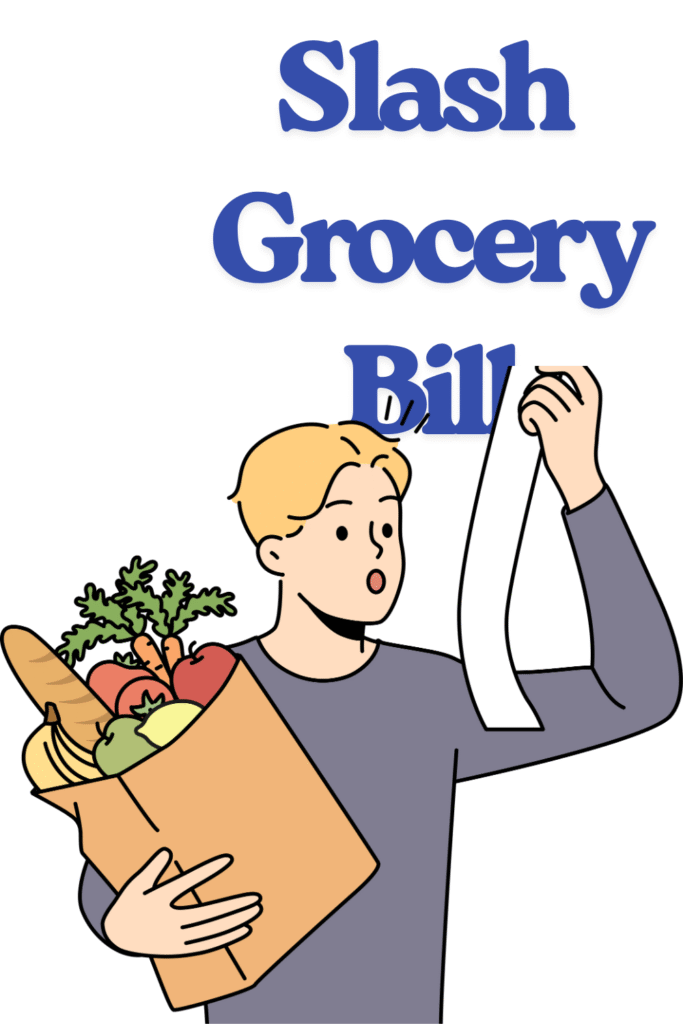 A. Gokkul
A. Gokkul
Best 10 Ways to outsmart Impulse buying
Best 10 Ways To Outsmart Your Impulse Buying
You are not alone who is feeling buyer’s remorse. Do not let impulse buying sabotage your saving. These 11 tips will help control your savings without killing the joy of shopping!!
Table of Contents
1
Your Shopping List is Your Best Friend
Going shopping with a list is a smart move. It helps you stay focused on what you need and avoid those “just in case” items that can add up fast.
2
The 24-Hour Rule
One of my favorite rules: when I feel the urge to buy something, I write it down and wait at least 24 hours. Most of the time—about 90%—the craving goes away.
3
Set a Monthly “Fun Budget”
It’s important to give yourself a monthly “fun budget” for those spontaneous purchases. This way, you can treat yourself without messing up your finances.
4
Don’t Shop When You’re Emotional
Feeling bored, sad, or stressed? Shopping while emotional often leads to regret and can quickly snowball into debt. Try to find other ways to cope.
5
Unsubscribe from Marketing Emails
Those “50% off” emails are designed by pros to tempt you. Unsubscribing from sales alerts and newsletters helps you stay in control and avoid impulse buys.
6
Leave Your Credit Card at Home
Swiping a credit card is way too easy—and paying it off isn’t. Try leaving it at home, also remove it from phone wallet and carrying a debit card or cash instead. It’ll help you stick to your budget and stay debt-free.
7
Track Your Spending
Knowing where your money goes is key. It keeps you aware of your spending habits and helps you stay in control. Try using a free spreadsheet or budgeting app to track everything.
8
Stop Browsing “Just to Look”
Don’t fall into the trap. Whether you’re shopping online or in-store, browsing for fun often turns into impulse buying. If you don’t need it, skip it.
9
Make a Wish List
Write it down instead of buying it right away. Create a wish list and revisit it after a week or two. Chances are, you’ll decide you don’t want most of the items.
10
Shop with Purpose – It’s Not a Hobby
Shop when you need something—not just to pass the time. Find other fun activities that don’t involve spending money.
9 powerful tips to cut your grocery bills by 30%
Hate Coupons? Here’s How to Cut Your Grocery Bill By 30% Without Them
By: A. Gokkul

Do you hate clipping coupons? Don’t worry, you’re not alone.
If the thought of hunting down deals and scanning barcodes makes your head spin, no problem, I’ve got your back.
You don’t need a folder full of coupons to slash your grocery bill.
In fact, with a few smart moves and everyday hacks, you can cut your spending by 30% (or more) without touching a single coupon.
Let’s dive into the real money-saving tricks that actually work, and no scissors required
Table of Contents
1.
Plan Your Meals Ahead
Meal planning is a total game-changer.
Create a quick menu for the week and build your grocery list around it. You’ll dodge buying a bunch of random crap you’ll never use, and it keeps you from tossing out food that goes bad. It saves you cash and cuts the food waste significantly.
2.
Stay Focused: Shop Only What’s on Your List
When you hit the store, don’t get sidetracked, stick to your list like it’s your ride-or-die. It’s super easy to get sucked into flashy sales or toss junk in the cart “just because.” That’s how your grocery bill gets outta hand real quick. If it ain’t on the list, don’t grab it. Keep it tight, stay on budget, and only snag what you need. That’s how you shop smart and keep your wallet happy.
3.
Buy Generic or Store Brands
Don’t sleep on store brands, they’re often just as good as the name brands, but way cheaper. You’re mostly paying for the fancy label with big brands. Next time you’re at the store, swap out a few items for the generic version and see how it goes. Most of the time, you won’t even notice the difference, but your wallet sure will. That’s an easy win right there.
4.
Shop Once a Week
Let me share an eye-opener: running to Walmart, Target, or Publix every other day is a money trap.
You roll in for one thing and end up dropping cash on stuff you don’t even need (not atleast this now). That’s how budget goes off the rails.
Instead, do one solid haul a week. Make your list, hit the store, grab only what’s on it, and get out. It saves you gas, time, and a whole bunch of munnie.
Plus, it keeps you from falling for those sneaky impulse buys.
5.
Don’t Shop Hungry
Hitting the grocery store on an empty stomach? Big mistake.
When you’re hungry, everything looks fire, and before you know it, your cart’s loaded with snacks you never planned on and don’t even need them. That’s how you blow your budget without even trying.
Eat a little something before you shop so you’re thinking with your brain, not your belly.
Trust me, your wallet will thank you later.
6.
Buy in Bulk (When It Makes Sense)
Let me tell you, the day I started buying in bulk was the day my grocery budget stopped stressing me out.
Before, I used to buy just enough rice or pasta to get through the week, then boom, I’d be back at the store again after a few days, spending more than I planned….
This time, I finally went to Costco and stocked up on the essentials: beans, toilet paper, pasta, rice, cooking oil, body wash, dish soap, shampoo, Tide, and more like this.
Definitely, it felt like I was dropping a lot of cash at the cash register, but guess what? I didn’t need to buy that stuff for weeks.
Now I get way more bang for my buck, and I’m not making emergency grocery runs every other day.
Just a heads-up, though, only bulk buy staples. There’s no point in letting things sit in the pantry collecting dust.
7.
Cook at Home More Often
Does a good part of your paycheck disappear into takeout boxes, like mine used to?
See, eating out all the time is super convenient and quick, but it adds up pretty fast.
Since I decided to stick to my budget and started cooking at home six days a week, it first felt daunting, but after a few weeks, it became a new habit.
And, I realised how much dough I was saving. Plus, you know what’s going in your food.
It doesn’t have to be fancy, just keep it simple, tasty, and budget-friendly. Use leftovers for your meals the next day.
8.
Compare Unit Prices
Here, I have a really smart catch for you to stop overspending at the store. Check the unit price like a pro, and you will start getting more value every time you shop.
Those flashy packaging or big labels are designed to fool us. The real deal is in the unit price. Those tiny numbers on the shelf tags tell you how much you’re paying per ounce, pound, or whatever. I was the same, used to grab whatever looked like a good deal, but once I started checking unit prices, I realized I was gettin’ played.
Sometimes the bigger size costs more overall but less per unit, that’s where the savings live.
So, next time you shop, peep that unit price and make sure you’re getting more than giving.
9.
Skip Pre-Packaged Convenience Foods
Do you think pre-packaged foods are saving you time?
Yes, that’s correct, but on the other hand, they drain your wallet faster.
Absolutely, those pre-packaged meals and snacks look lifesaver to us when we’re short on time, but in reality, they’re sneaky pocket-busters.
When I was in college and working, I always felt like I didn’t have enough time to cook my meals, and I used to feed myself that pre-packaged food so I could microwave it and eat it, done; it was super convenient and easy.
But, when I started cooking my meals at home to save some money for my 1st car’s downpayment, I realized how much cash I was tossing out.
Ditching the overpriced convenience food took a little more effort, but my health and budget got much better.
Final Words
Through my experience, I have learned saving money on groceries doesn’t have to be complicated and you definitely don’t need a stack of coupons to make it happen. With a little planning, some smart shopping habits, and a few simple swaps, you can keep more cash in your wallet.
Loved these money-saving tips?
Save this post for your next grocery run & share it with a friend who needs to cut their food bill too!
And If you have any questions or suggestions, Please feel free to comment me down below and I will reply as soon as I can. Thank you so much for your read, see you soon again.
10 Easy Ways To Save Money
10 Easy Ways To Save Money
I’m sharing 10 simple ways to save money while still enjoying your lifestyle. Let’s jump right in!
Table of Contents
1
Use Cashback and Rewards Programs
Why spend more when you can get your money back? Use credit cards that offer 2% to 3% cashback instead of paying with a debit card or cash. Join loyalty programs to save on groceries, dining, and even travel. “A few cents saved add up over time!”
2
Never Shop When You're Hungry
A study by the National Library of Medicine suggests that shopping on an empty stomach isn’t a good idea. You’re more likely to make impulsive and poor choices.
3
Cut Subscription Costs
Do you really need all the streaming services you’re subscribed to? Review your subscriptions, keep only the ones you use, and cancel the rest. You can also share accounts with family or friends to split the cost.
4
Use Coupons
Wait a sec—before you buy anything online, search for promo codes or coupons! You’ll be surprised at how much you can save with just a quick search.
5
Switch to Generic Brands
When you compare brand-name products with generic versions, you’ll often find that store-brand items offer the same quality for much less. Swapping just a few items on your next trip can add up to actual savings.
6
Reduce Energy Consumption
Turn off lights and unplug devices when they’re not in use. This simple habit can lower your energy bills—and it’s better for the environment, too!
7
Take Advantage of Free Entertainment
You don’t have to spend money to have fun. Look into community events, local parks, or free museum days. Your wallet will thank you!
8
Negotiate Your Bills
Call your service providers (internet, phone, insurance) for better rates. Many companies have discounts or promotions available—you just have to ask! If they don’t, consider using an agent who can find you a better deal.
9
Use Public Transportation or Carpool
This eco-friendly option is also kind to your wallet. Gas, parking, and maintenance costs can add up fast, so try carpooling or using public transit when you can.
10
Automate Your Savings
Finally, set up an automatic transfer from your checking to your savings account each month. This method makes saving effortless and consistent.

